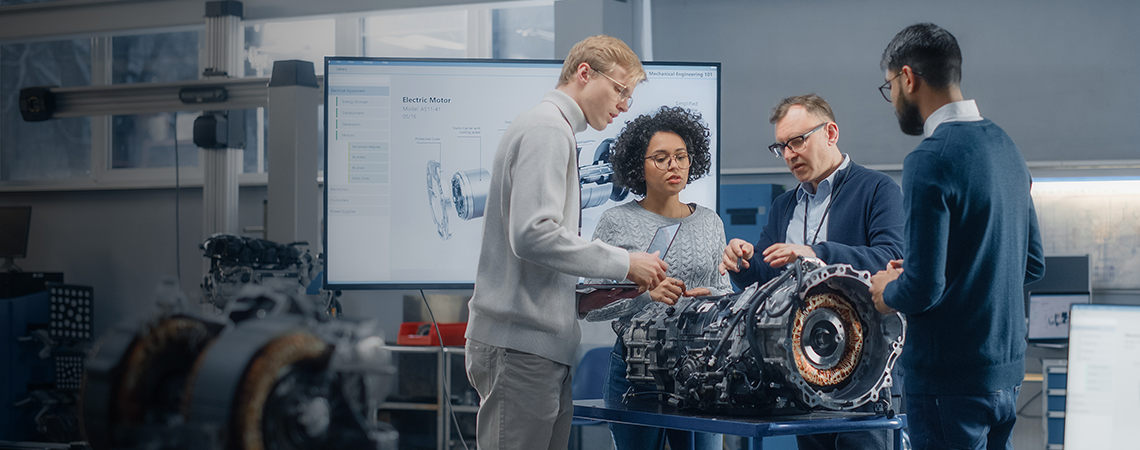
How does the engine of an electric car work?
-
14 May 2024

Electric cars – meaning full electric vehicles – are powered by an electric motor that operates using electricity stored in batteries. But how does this motor work? In this article, we seek to clarify.
How does the engine of an electric car work?
In an electric car, the electric motor is typically located under the hood or near the wheels. The motor is powered by a group of rechargeable batteries, usually composed of lithium-ion cells. These batteries can be recharged by connecting the car to a charging point.
Electric motors utilize the principle of electromagnetism to convert electrical energy into mechanical energy. When the driver presses the accelerator pedal, the electric motor draws energy from the battery pack and uses it to turn the wheels. Unlike a gasoline engine, which uses combustion to create movement, an electric motor provides instantaneous torque, allowing the car to accelerate very smoothly.
Rotor and stator
The electric motor consists of a rotor and a stator. The stator is the stationary part of the motor, while the rotor is the rotating part. The stator contains a series of coils that are excited with electricity to create a magnetic field. When electricity flows through the coils, it creates a magnetic field that interacts with the rotor, causing it to rotate.
The rotor contains a series of magnets arranged in a specific pattern. When the magnetic field of the stator interacts with the magnets of the rotor, it creates a rotational force that spins the rotor. This rotational force is transferred to the car's wheels through the transmission, propelling the car forward.
Types of motors
There are two main types of motors: alternating current (AC) motors and direct current (DC) motors. AC motors are the most commonly used in electric cars because they offer better efficiency and are easier to control. However, DC motors are still used in some electric cars, especially in older models or smaller vehicles.
In an alternating current motor, the stator coils are arranged in a specific pattern to create a rotating magnetic field. This rotating magnetic field interacts with the rotor magnets, causing it to rotate. The speed and torque of the motor can be controlled by adjusting the frequency and amplitude of the electricity supplied to the motor.
Alternating current and direct current
In a direct current motor, the stator coils are connected to a series of commutator bars, which switch the direction of the current flowing through the coils as the rotor rotates. This creates a magnetic field that interacts with the rotor magnets, causing it to rotate. The speed and torque of the motor can be controlled by adjusting the voltage of the electricity supplied to the motor.
Of course, both alternating current and direct current motors are powered by the car's battery, which stores the electricity generated by connecting the car to an external power source (such as a charging station) or, to a lesser extent, by regenerative braking. The battery pack is connected to an inverter, which converts the stored electricity into electricity that can be used to power the motor.
In summary, electric car motors operate by using the electricity stored in the car's battery to create a magnetic field that interacts with the rotor magnets, causing it to rotate. The speed and torque of the motor can be controlled by adjusting the frequency, amplitude, or voltage of the electricity supplied to the motor.

Don’t stop here
There’s much more to discover!
Other related articles
Fully electric vehicles are still a niche in the Italian market. However, the numbers are expected to increase in the coming years. Let's explore the features of e-mobility to understand how we need to change our approach to mobility, both in cities and f
The history of electric cars is truly unique: unlike many other technologies, the path of battery-powered vehicles has been marked by highs and lows and unexpected turns of events. Despite various theories regarding the date of birth of the first electric
Plenitude inaugurates a new attraction at Leolandia amusement park to introduce children and their families to the world of electric mobility.


